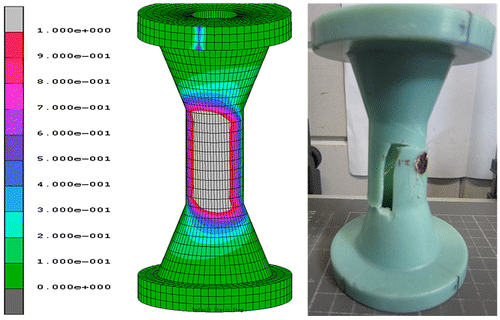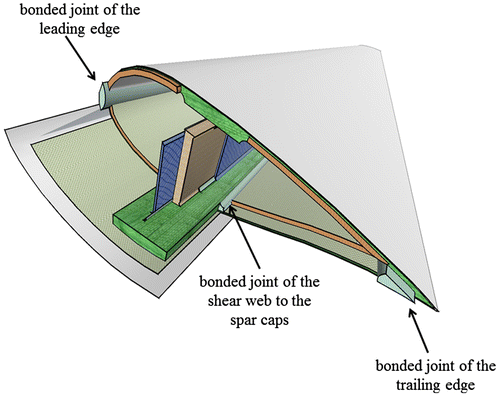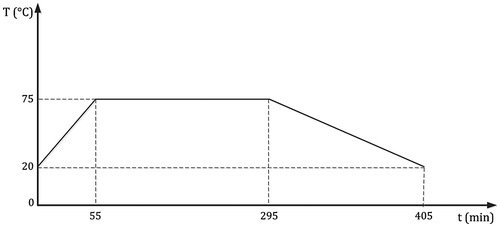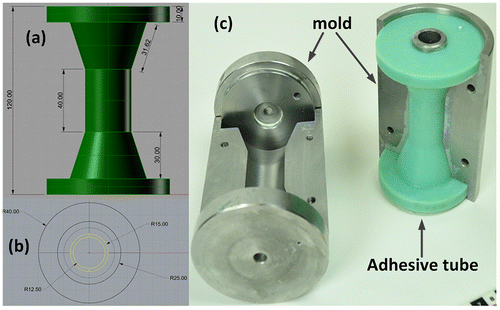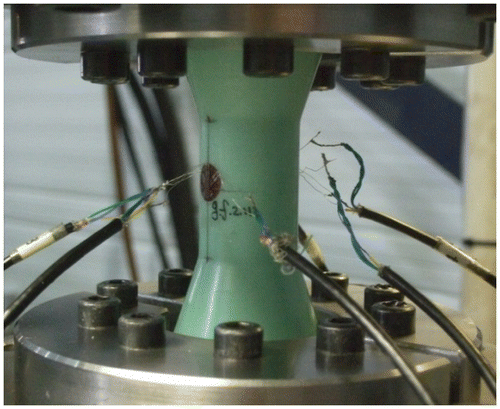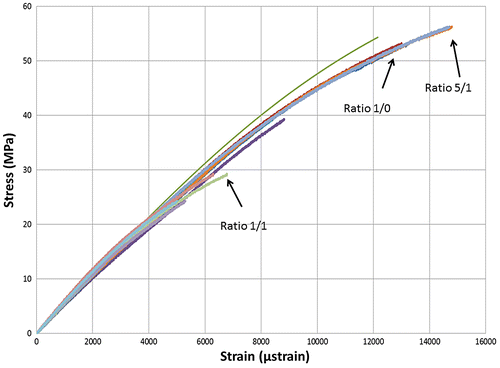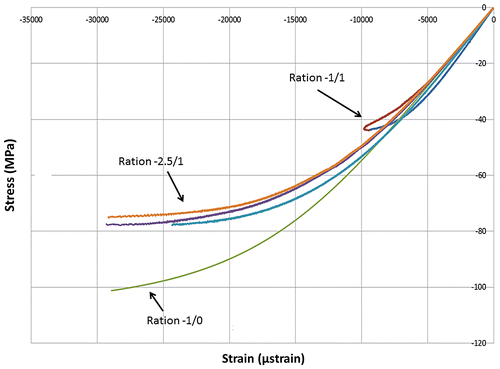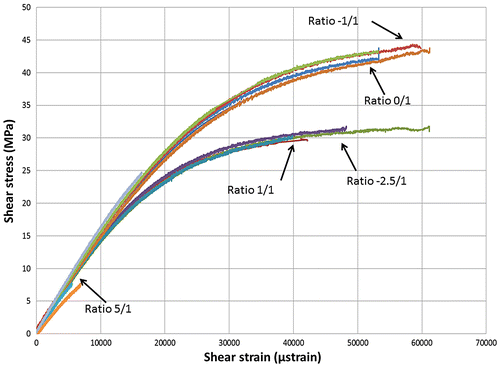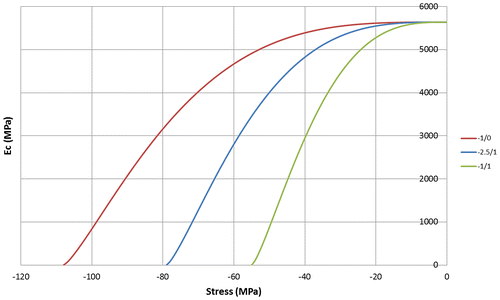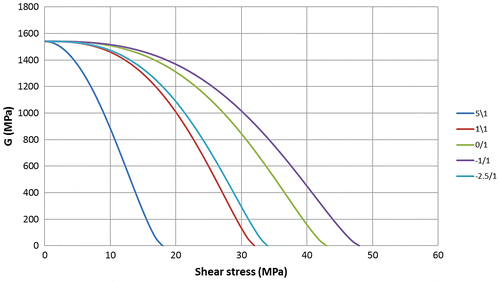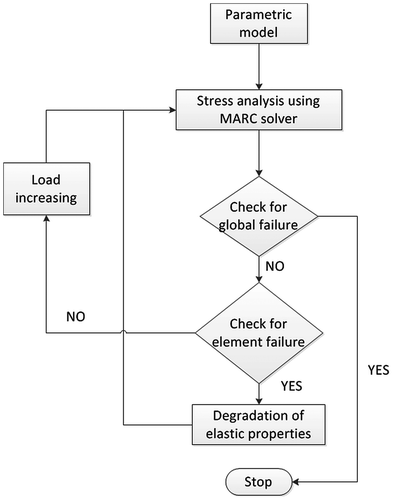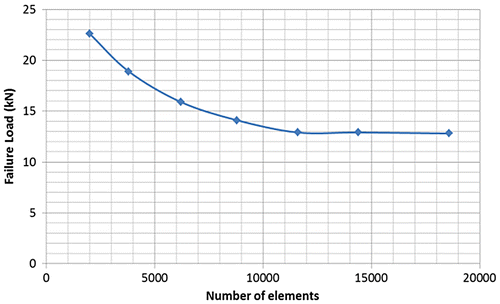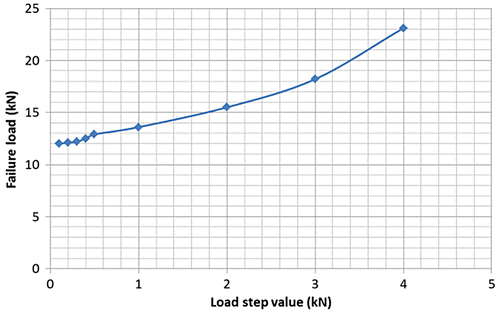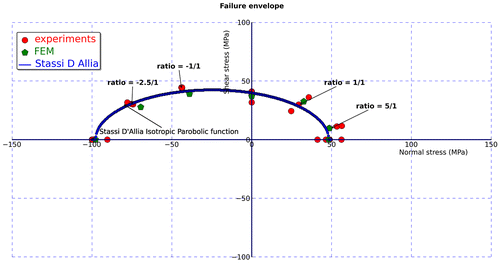Figures & data
Table 1. The tensile elastic properties of the adhesive tube.[Citation18]
Table 2. The compressive elastic properties of the adhesive tube.[Citation18]
Table 3. The shear elastic properties of the adhesive tube.[Citation18]
Table 4. The biaxial failure loads and stress.
Table 5. The model parameters for different biaxial stress ratios.
Table 6. Degraded elastic properties of the adhesive.
Table 7. Failure experimental and numerical stresses.
Figure 12. Comparison between the experimental observations and numerical results for the 1/0 loading ratio (uniaxial tension).
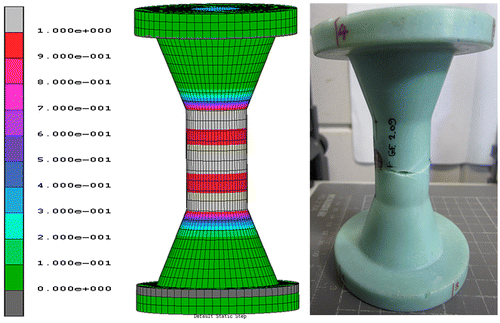
Figure 13. Comparison between the experimental observations and numerical results for the 5/1 loading ratio (biaxial tension–torsion).
